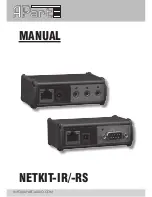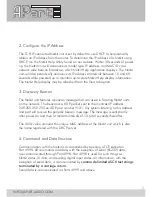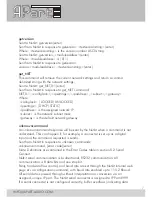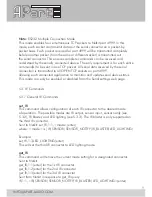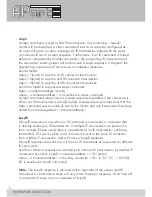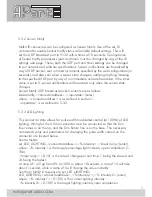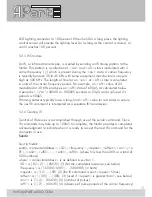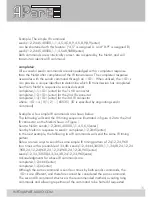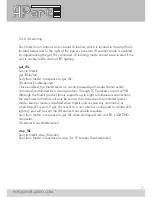
WWW.APART-AUDIO.COM
4
The Netkit product family’s modular design provides a variety of capabilities.
Each module provides a particular function: power and network connections, with
either infrared (IR) or digital connections (RS232). A module may also support
one or more connectors of the same type. For example, an IR module has three
independent IR connectors; whereas, a serial module has only one serial RS232
connector. This is due to the fact that the number of connectors a module can
support is dictated by its 1.5 inch physical width.
It is important to understand that a module’s address is determined solely by its
physical position within the Netkit enclosure. Each module occupies 1.5 inches
of front panel space. At power on, module addresses are assigned starting with
“0” for the left-most module (containing the network and power connectors) and
increasing sequentially to the right until all module addresses are assigned (see
figure). This presents a consistent programming interface as additional modules are
added.
A connector’s address is its position within a module, starting at 1 on the left, and
increasing sequentially as you move to the right. A complete connector address
includes the module address and the connector location in the module, separated
by a colon. One IR module is contained in the Netkit-IR (figure 1). The first IR
connector on the IR module has an address of 1:1, whereas the third IR connector
has an address of 1:3.
IR Connectors: Support for an IR blaster is enabled on the third (*:3) IR connector
on an IR module. This can be configured via command, or must be selected via the
internal webserver. Attempts to configure connectors other than *:3 as an IR blaster
will result in a returned error message. The IR blaster is available on request only.
Contact your local dealer for more information.
Netkit application programming interface. Version 1.0
1. The Netkit modular design concept

